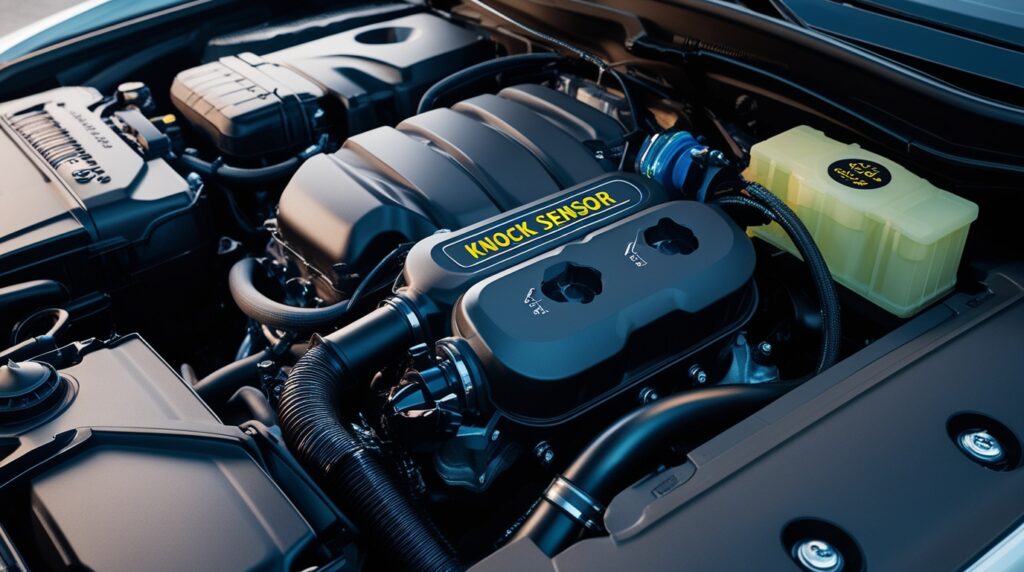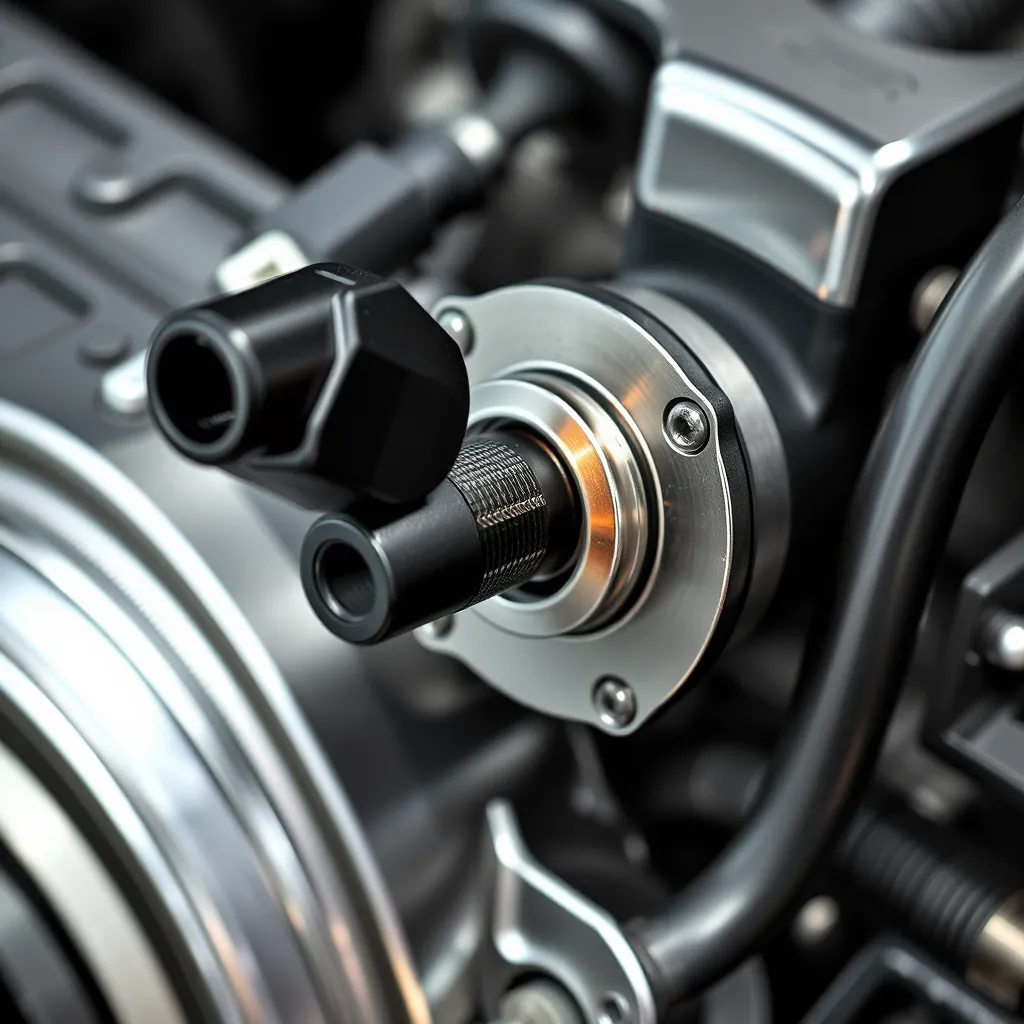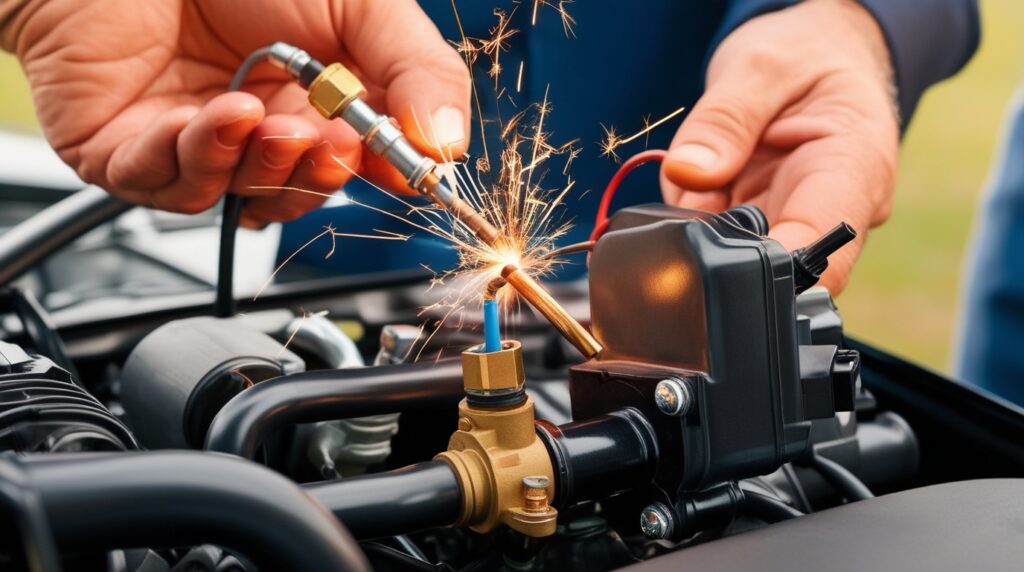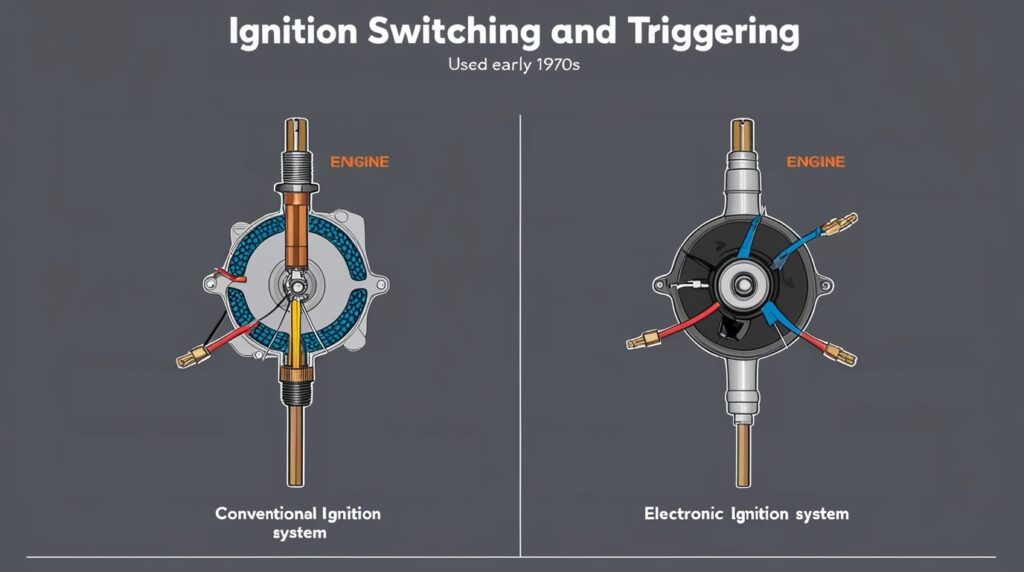
Introduction
A knock sensor is a critical component in modern internal combustion engines, primarily designed to detect engine knocking—an undesirable phenomenon characterized by the premature ignition of the air-fuel mixture in the combustion chamber. Engine knocking can lead to significant engine damage, making the knock sensor vital for maintaining performance, efficiency, and compliance with emission standards. By monitoring vibrations and sounds within the engine, the knock sensor signals the engine control unit (ECU) to adjust parameters such as ignition timing, thus mitigating potential damage and optimizing engine operation in real-time.
Notable for their application in both passenger and commercial vehicles, knock sensors are integral to the automotive industry as engine designs become increasingly complex with the rise of turbocharged and hybrid vehicles. The functionality of knock sensors has evolved alongside technological advancements, transitioning from simple mechanical devices to sophisticated electronic sensors that utilize various detection techniques, including ion current measurement and pressure analysis, to improve accuracy and responsiveness.
Controversially, the integration of knock sensors raises questions regarding their replacement by advanced computational techniques, such as machine learning and enhanced in-cylinder pressure sensors, which promise even more precise control over engine dynamics. As research in this field continues to grow, challenges such as the durability of new sensor technologies and their effectiveness in diverse operating conditions remain pivotal discussions among automotive engineers and manufacturers.
In addition to their role in optimizing performance, knock sensors serve a diagnostic function, alerting drivers to potential engine issues and thus preventing costly repairs. Their importance in ensuring engine longevity and efficiency underscores their relevance in both current automotive technologies and future innovations aimed at reducing environmental impact and improving energy efficiency.

Mechanism of Action
Overview of Engine Knock
Engine knock, characterized by the rapid self-ignition of unburned fuel and air, generates noise due to fluctuations in gas pressure within the combustion chamber. This phenomenon occurs predominantly under high temperatures and pressures, which can lead to engine damage if not adequately controlled.
Detection Techniques
Ion Current Measurement
One innovative method for detecting knock involves measuring the ion current across the spark plug leads. As combustion events produce ionized particles in the air-fuel mixture, these particles form a conductive path between the spark plug electrodes. Changes in the ion current signal, resulting from autoignition events, can provide real-time insights into the occurrence of knock. Studies have shown that this method can classify knocking cycles with a high degree of accuracy, reaching up to 98.4% with the application of artificial neural networks.
Pressure and Vibration Analysis
In-cylinder pressure measurements and vibrations within the engine block are also employed to detect knock. Pressure transducers capture gas pressure fluctuations, while accelerometers detect vibrations that occur as a result of these fluctuations. The slower buildup and decay of vibrations compared to pressure oscillations help to identify knock events, which are characterized by their distinct acoustic signatures.
Speed Oscillations
Another detection technique focuses on small variations in engine speed that can be correlated with knock intensity. By analyzing the amplitude of speed oscillations, researchers have found a correlation with knock severity, allowing for detection in specific operating conditions.
Knock Control Strategies
Knock control strategies aim to optimize the trade-off between engine performance and protection against knock. Since knock events are stochastic in nature, designing effective controllers requires a probabilistic framework. These strategies adjust the engine’s operating parameters, such as spark timing, to mitigate knock while striving to maintain maximum torque output.
As the automotive landscape evolves, especially with the increasing prevalence of turbocharged and hybrid vehicles, the understanding and management of knock have become increasingly complex. Enhanced computational capabilities in modern vehicles facilitate the integration of sophisticated algorithms for knock detection and control, potentially replacing traditional knock sensors.
Applications
Automotive Industry
Knock sensors play a critical role in modern automotive technology, primarily in spark-ignition (SI) engines, which power the majority of passenger vehicles globally. Their primary function is to monitor engine noise and vibrations to detect knock, a phenomenon caused by the rapid self-ignition of unburned fuel and air in the combustion chamber.
When an engine experiences knocking, the knock sensor signals the vehicle’s engine control unit (ECU) to adjust parameters such as ignition timing and air-fuel mixture to mitigate damage. This capability is essential for maintaining engine performance, efficiency, and compliance with emission standards, especially as the industry shifts towards hybrid and more complex powertrains.
Commercial Vehicles
The demand for automotive knock sensors is particularly pronounced in commercial vehicles, where engine performance and fuel efficiency are crucial. These vehicles often operate under challenging conditions that lead to increased knocking and reduced fuel economy. Advanced knock sensors enable precise monitoring of engine parameters, which is vital for optimizing performance and ensuring compliance with environmental regulations. As the fleet of commercial vehicles grows, the need for effective knock monitoring systems becomes increasingly important to enhance operational efficiency and reduce emissions.
Diagnostics and Repair
In the context of vehicle diagnostics, knock sensors serve as essential components that assist in the early detection of engine problems. When internal engine malfunctions occur, the knock sensor activates and alerts the driver via the check engine light, indicating that professional service may be required. This proactive feature helps prevent more significant damage by prompting timely repairs, which is crucial for maintaining vehicle longevity and safety. Furthermore, the integration of modern diagnostic tools, such as the PicoScope 7, enhances the capability to analyze and troubleshoot knock sensor performance in real time.
Future Technologies
As advancements in sensor technologies continue, the application of knock sensors may expand beyond traditional engines. Research into alternative powertrains and enhanced sensor systems could lead to new methodologies for monitoring engine health, ultimately contributing to more efficient and environmentally friendly vehicle designs. The integration of multifunctional sensors that can assess various engine conditions simultaneously represents a promising direction for future automotive technologies.

Installation and Maintenance
Installation of a Knock Sensor
Replacing a faulty knock sensor is a critical procedure that can ensure the optimal functioning of an engine. The installation process typically involves several key steps. First, the sensor must be located, which can vary by vehicle make and model, often found on the engine block, cylinder head, or intake manifold. Once located, the next step is to disconnect it from the wiring harness, which may require unclipping or unscrewing, depending on the design.
After this, the faulty sensor can be removed, and a new one installed by reversing the disconnection process. It is essential to ensure proper installation, as both over-tightening and under-tightening can impact sensor function. Therefore, if there is any uncertainty regarding the installation process, it is advisable to consult a professional mechanic. This minimizes the risk of further issues that may arise from improper installation.
Maintenance of Knock Sensors
Preventive Measures
To maintain the reliability of a knock sensor, vehicle owners should adopt a proactive maintenance approach. Regular inspections for wiring faults, ensuring that connectors are clean and secure, and checking for any signs of physical damage can help catch potential problems early. Furthermore, integrating these preventive measures into a vehicle’s overall maintenance regimen can significantly enhance engine performance and fuel efficiency while prolonging the lifespan of the knock sensor.
Troubleshooting and Repair
If a knock sensor issue is suspected, a systematic diagnostic approach should be taken. This includes using diagnostic tools to check for trouble codes related to the knock sensor. In many cases, symptoms such as reduced engine performance, decreased fuel efficiency, or the illumination of the Check Engine Light may indicate a malfunctioning sensor. If the sensor is confirmed to be faulty, addressing underlying causes like wiring issues is crucial to avoid recurrent problems.
In some scenarios, a full replacement may not be necessary; a loose or corroded connector can often be cleaned and re-secured to restore functionality. However, if the wiring is found to be damaged, it may need repair or replacement to ensure accurate signal transmission to the engine control unit. By staying vigilant about maintenance and being proactive in addressing any issues, vehicle owners can help ensure the longevity and reliability of their knock sensors, which ultimately contributes to the overall health of their engines.
History
The concept of detonation in internal combustion engines, which is closely related to the function of knock sensors, was first described in a letter from Lodge Brothers in November 1914. They discussed the phenomenon of “knocking” or “pinging” in motorcycles, indicating that early ignition could cause gas to detonate rather than expand normally. This results in a sound akin to metal being tapped with a hammer, which highlights the significance of understanding this issue for engine performance.
Further investigation into detonation was conducted by engineer Harry Ricardo between 1916 and 1919, focusing on failures in aircraft engines. The evolution of knock sensors began in the 1980s with the introduction of early models that utilized piezoelectric materials to detect vibrations caused by engine knocking. These early sensors marked a pivotal advancement in engine management systems, as engine knocking was a common issue leading to significant damage in older engines lacking sophisticated detection technologies.
Over the years, the technology behind knock sensors has greatly improved, incorporating advanced materials and methods that enhance their accuracy and reliability. Modern knock sensors are strategically placed near the engine block, typically on the cylinder head or intake manifold, allowing for precise detection of vibrations from knocking. These sensors are crucial for sending electric signals to the engine control module (ECM), enabling the vehicle to adjust ignition timing for optimal performance.
As technology progressed, so did the complexity of testing and troubleshooting knock sensors, with technicians now employing multimeters to assess resistance and continuity to ensure proper functionality. The history of knock sensors reflects the broader advancements in automotive technology, underscoring their role in improving engine performance and longevity in modern vehicles.
Recent Advancements
Advances in Sensor Technology
Recent developments in knock sensing technologies have focused on enhancing the accuracy and efficiency of detecting knock events in internal combustion engines (ICE). One notable advancement is the introduction of low-cost, series-produced in-cylinder pressure sensors, which allow the engine control unit (ECU) to more effectively detect knock.
These sensors have shown the potential to increase engine efficiency by 0.5–0.7 percent through improved spark timing, which optimizes combustion pressure and thermal efficiency. However, the implementation of such sensors poses challenges, including durability and cooling issues due to their exposure to the combustion chamber environment.
Machine Learning Applications
The integration of machine learning algorithms has also emerged as a significant advancement in knock detection. Machine learning techniques enable more precise analysis of various signals associated with knock, facilitating the development of systems capable of adapting to complex and noisy environments. This approach enhances the overall reliability of knock detection, which is essential for optimizing engine performance.
Hybrid Engine Complexities
The rise of hybrid powertrains has introduced new complexities in engine operation, impacting knock propensity. Hybrid vehicles typically operate using both an internal combustion engine and electric propulsion, particularly under high-load conditions. These conditions can lead to increased in-cylinder pressures and temperatures, thus raising the likelihood of knock events. As hybrid technology becomes more prevalent, the need for advanced knock detection and control mechanisms becomes critical to ensure optimal performance and engine longevity.
Research Trends
From 2000 to 2017, research publications related to knock steadily increased, focusing on modeling autoignition processes, enhancing knock detection signals, and exploring new additives to mitigate knock. A notable area of study during this period was “mega-knock,” characterized by intense knock events, particularly with high-ethanol-content fuels. This highlights the ongoing need for innovation in knock sensing technologies to address emerging challenges in engine performance and efficiency.
Related Technologies
Engine Control Units (ECUs)
The integration of knock sensors with Engine Control Units (ECUs) is pivotal in optimizing engine performance. These sensors detect vibrations caused by knocking or misfiring and transmit signals to the ECU, which then adjusts ignition timing to prevent engine damage. This real-time adjustment enhances fuel efficiency and reduces emissions, making the vehicle’s operation more sustainable. Advanced knock sensors can differentiate between normal engine vibrations and knocking, further ensuring accurate engine tuning.
Sensing Technologies
Knock sensors are part of a broader field of sensing technologies that have seen significant advancements in recent years. These advancements include the development of various sensors and platforms that utilize functional materials and novel sensing mechanisms to optimize performance. Key areas of focus in this domain encompass design principles, fabrication and characterization techniques, as well as multifunctional and multiplex sensing platforms, which are crucial for system integration in numerous applications.
Carbon Capture and Energy Efficiency
Carbon capture technologies play a critical role in reducing greenhouse gas emissions, particularly carbon dioxide (CO2), which has risen dramatically since the industrial revolution. By capturing CO2 from power plants and other sources, these technologies help mitigate climate change impacts.
Furthermore, improving energy efficiency in residential and industrial sectors is essential for lowering overall energy consumption. Innovations such as energy-efficient appliances have been shown to significantly reduce energy bills for households, thus promoting broader adoption and greater impact on energy savings at a national level.
Fuel Octane Rating and Engine Performance
The octane rating of fuels is another critical aspect related to knock sensors. Higher engine compression ratios often require fuels with higher octane ratings to prevent detonation. The knock sensor detects abnormal engine sounds and alerts the ECU to make necessary adjustments. This interaction between fuel characteristics and engine management systems demonstrates the essential role of knock sensors in achieving optimal power output while minimizing fuel consumption and emissions.



